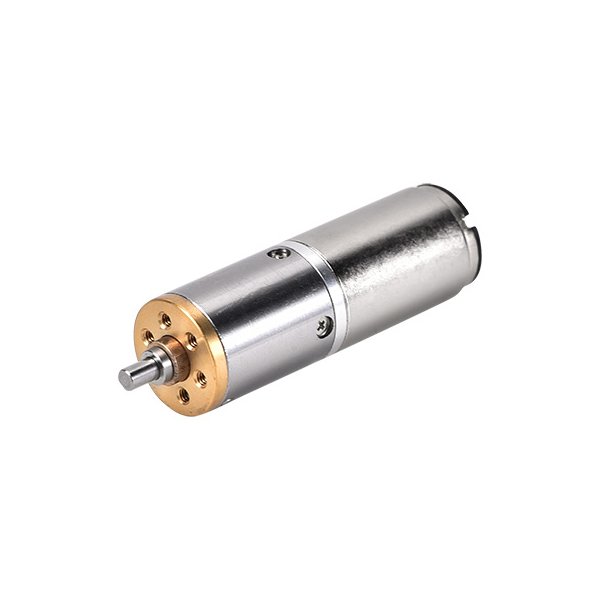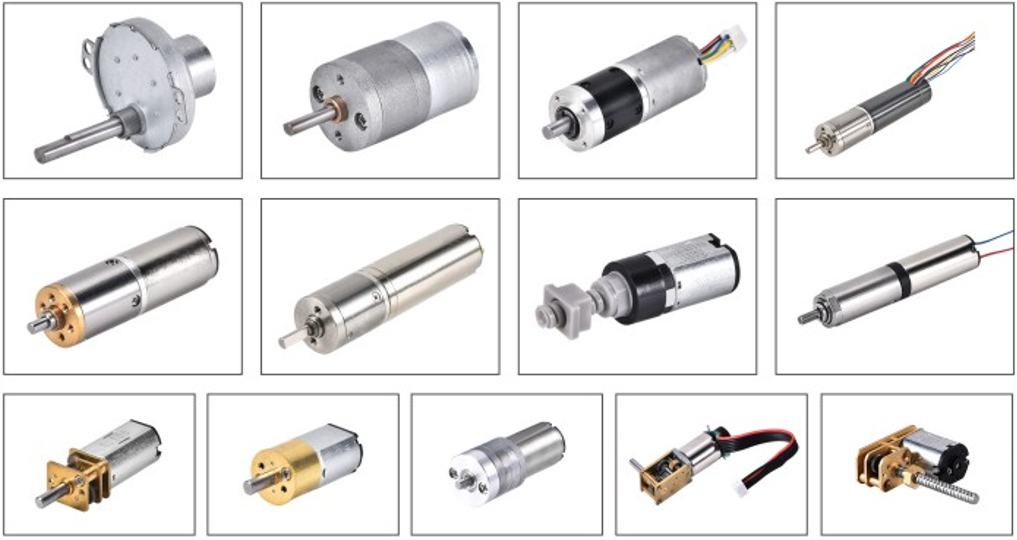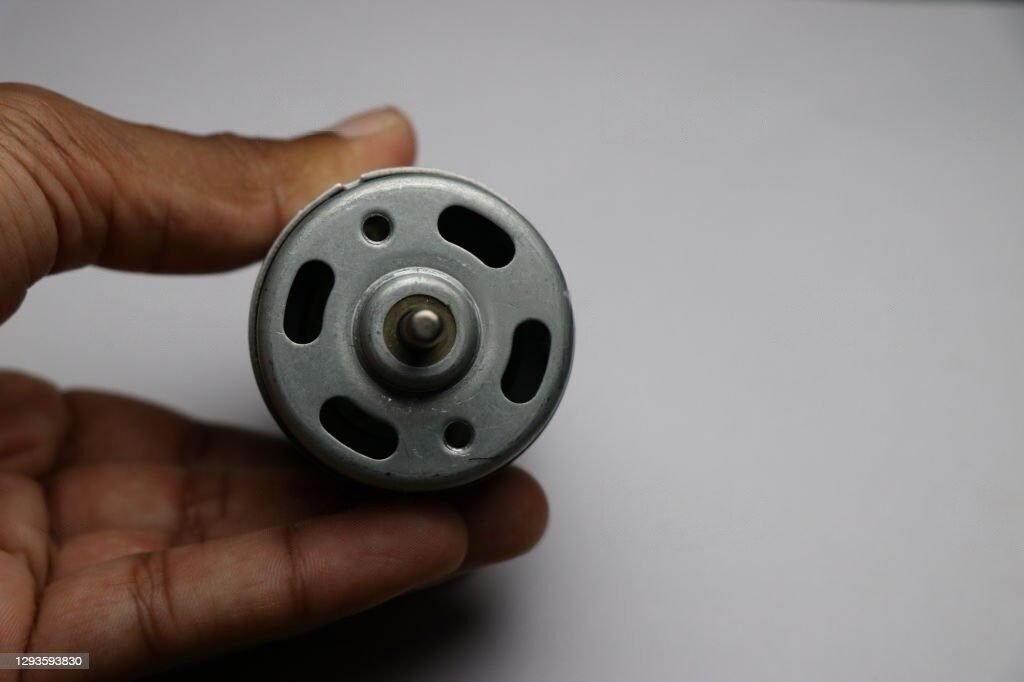Shaft motors are important in engineering for accurate motion control. They work very efficiently, often saving over 90% of energy. This makes them a smart and eco-friendly choice for industries.
When used with encoders, shaft motors become even more precise. Encoders give instant feedback to ensure correct movement and position. This teamwork is key for robots, medical tools, and factory machines, where accuracy is very important.
Key Takeaways
Shaft motors use less energy, saving over 90%, and are eco-friendly for many industries.
Adding encoders to shaft motors improves accuracy by giving live updates on speed and position.
Pick the right encoder: incremental for tracking movement or absolute for exact positioning, based on what you need.
Think about things like heat and shaking when choosing motors and encoders to make sure they work well.
Custom options, like INEED planetary gear motors with rotary encoders, allow flexibility for special jobs in robots and machines.
Understanding Shaft Motors
What Are Shaft Motors?
Shaft motors are electric motors that create precise spinning motion. They are used in places where accuracy and dependability are very important. Unlike regular motors, shaft motors use a direct drive system. This means they don’t need extra parts like belts or gears. This design saves energy and works more efficiently.
Think of a shaft motor as the machine’s heart. It changes electrical power into moving power. It creates torque, which is the force that makes things spin. This torque moves the motor’s shaft, helping it power different systems. For example, in robots, shaft motors move robotic arms with great accuracy.
Here are some important features of shaft motors:
No-load characteristics: Checked when the motor’s shaft has no weight.
Stall characteristics: Measured when the shaft cannot move at all.
Maximum efficiency characteristics: Tested when the motor works its best.
Maximum power output characteristics: Seen when the motor gives its highest power.
These features show how flexible and useful shaft motors are in many situations.
Key Design Principles of Shaft Motors
Shaft motors are made to be strong and work well. Engineers follow rules to make sure these motors fit industry needs. For example:
Key and keyway design: Standards like BS 4235 and ASME B17.1-1967 ensure the shaft and load connect securely.
Material selection: Strong materials like steel or special alloys are used to last longer.
Precision engineering: Advanced methods reduce loose parts and make movements smooth.
Reliability is also very important in shaft motor design. Research shows these motors work well even in tough conditions. The table below lists studies about their reliability:
Study Title | Focus | Year | Journal |
|---|---|---|---|
Reliability analysis of the shaft subjected to twisting moment and bending moment for the exponential and Weibull distributed strength and stress | Reliability analysis under different conditions | 2023 | Indian Journal of Science and Technology |
Probabilistic Fatigue Design of Shaft for Bending and Torsion | Fatigue design considerations | 2014 | International Journal of Research in Engineering and Technology |
Reliability approximation for solid shaft under Gamma setup | Reliability approximation methods | 2014 | Journal of Reliability and Statistical Studies |
Design and Analysis of Drive Shaft with a Critical Review of Advance Composite Materials and the Root Causes of Shaft Failure | Design and failure analysis | 2020 | International Research Journal of Engineering and Technology |
Reliability analysis of drilled shaft behavior using finite difference method and Monte Carlo simulation | Behavior analysis using simulations | 2007 | Geotechnical and Geological Engineering |
These studies show how good design helps shaft motors last a long time.
Applications of Shaft Motors in Robotics and Beyond
Shaft motors are very important in robotics and other areas. In robots, they help with exact movements, like turning joints or moving parts in a straight line. They can work at different speeds and power levels, making them perfect for detailed tasks.
Here are some performance facts about shaft motors:
DC Motors: Work with voltages from 1.5 to over 100 volts. Commonly used at 6, 12, or 24 volts in battery-powered robots.
Speed: DC motors can spin from 1 to 20,000 RPM, depending on the job.
Torque: The most torque happens when the motor is stopped, showing it can handle heavy loads.
Shaft motors are also used in medical tools, factory machines, and gadgets. For example, in hospitals, they control surgical tools with precision. In factories, they power conveyor belts and automated systems efficiently.
The chart below shows how reliability studies have been done over the years, proving the constant growth in this field:

As technology improves, shaft motors are being used in more ways. They are a key part of modern engineering.
Introduction to Encoder Systems
What Are Encoders and Their Role in Motor Control?
Encoders are tools that measure motion or position. They turn this information into signals that machines can understand. Encoders help control motors by giving feedback on speed, direction, and position. This feedback makes movements accurate, which is very important in robotics, medical tools, and factory machines.
Think of an encoder as the “eyes” of a motor system. It watches the motor’s position and sends signals to adjust its movement. For example, in a robotic arm, an encoder ensures the arm moves exactly where it needs to go. Without encoders, such precise movements would be very hard to achieve.
Encoders have improved a lot over time. The table below shows studies about how encoder systems have made motor control better:
Evidence Description | Source | Year |
|---|---|---|
Brain-computer interface technology can restore learning and improve cognitive functions in elderly patients, enhancing motor control. | Buch et al. | 2018 |
Non-invasive BCIs have been utilized to enhance memory and planning through brain activity modulation. | Burke et al. | 2015 |
The cooperation of physical and physiological systems is essential for motor control, which can be affected by aging. | Rosenbaum | 2009 |
Types of Encoders: Incremental vs. Absolute
There are two main types of encoders: incremental and absolute. Each type works best for different tasks.
Incremental Encoders:
These track changes in position as the motor moves. They are great for tasks needing endless movement. But they need a starting point to know where to begin.Absolute Encoders:
These give a unique code for each position. They stay accurate even if the power goes out. They are perfect for tasks needing high precision, like CNC machines.
The table below compares these two types:
Feature | Incremental Encoders | Absolute Encoders |
|---|---|---|
Range | Can measure practically infinite movement | Fixed output range, rolls over on exceeding |
Resolution | Commonly up to 1024 PPR, accuracy +/- 0.1° | Higher resolutions, often 13+ bits, < 0.0001° |
Calibration | Requires homing for position zeroing | Outputs unique signal, calibration needed once |
How Rotary Encoder Works in Precision Applications
A rotary encoder measures spinning motion and turns it into signals. It is used in precise tasks like robotics, wind turbines, and medical tools. Knowing how rotary encoders work helps you see why they are so important.
Rotary encoders detect how a shaft spins. Absolute encoders, for example, give a special code for each position. This keeps the position accurate even if the power goes out. This is very useful for CNC machines and robotic arms, where accuracy is critical.
Rotary encoders also work well at high speeds. They can handle speeds up to 30,000 rpm with little wear. This makes them great for factory machines. The encoder’s disk pattern affects how accurate it is. Quadrature encoders, for instance, give more reference points, making them more precise.
The need for rotary encoders in robotics and factories is growing. They provide exact measurements, helping machines do complex jobs easily.
Integration of Shaft Motors with Encoder Systems
Why Integration Matters for Performance
Combining shaft motors with encoders makes systems more accurate and efficient. Encoders give feedback by watching the motor’s movement and position. This feedback helps control speed and ensures precise positioning. It is very useful in robots, medical tools, and factory machines.
Integration does more than improve accuracy. Encoders track the motor shaft’s position and adjust speed as needed. For example, in a robotic arm, the encoder ensures each joint moves correctly. This prevents mistakes and keeps operations smooth. It also improves safety by stopping unexpected movements.
New rotary encoder technology has made systems even better. Inductive rotary encoders now offer stronger vibration resistance and better control. The table below shows these improvements:
Improvement Aspect | Description |
|---|---|
Accuracy and Safety | Inductive rotary encoders improve control and system accuracy. |
Vibration Resistance | They resist vibrations, making them great for factory machines. |
Dynamic Behavior | HEIDENHAIN encoders allow systems to perform better with large bandwidth. |
Speed Stability | Speed stability matches that of optical encoders. |
These upgrades make encoders essential for high-performing systems.
Compatibility and Mounting Options for Motor Encoders
Picking the right encoder means checking compatibility and mounting options. Encoders come in types like rotary (measures spinning) and linear (measures straight motion). The encoder must match the motor’s needs and job requirements.
Mounting is also important. Encoders can attach directly to the motor shaft or externally. Direct mounting saves space and reduces wear. External mounting works well for bigger systems. INEED Electronics offers custom encoders that fit many designs for top performance.
When choosing encoders, look at factors like pulses per revolution (PPR), resolution, and durability. High-end encoders can have up to 50 million PPR and very fine resolutions below 0.001°. The table below compares standard and high-end models:
Metric | Standard Models | High-End Models |
|---|---|---|
Pulses per Revolution (PPR) | 1 million | 50 million |
Angular Resolution | > 0.001° | < 0.001° |
Mean Time Between Failures | 20,000 hours | 60,000 hours |
This shows why picking the right encoder is so important.
Practical Examples: INEED Planetary Gear Motor with Rotary Encoder
INEED Electronics makes planetary gear motors with rotary encoders. These motors are precise and powerful, perfect for robots, medical tools, and factory machines.

For example, the INEED planetary gear motor is small but strong. Its rotary encoder tracks the motor shaft’s position very accurately. This ensures smooth and precise movement, even in tough conditions. It also helps control speed and rotation for better system performance.
These motors can be customized. You can change encoder settings like PPR and resolution to fit your needs. Whether you’re building a robot or automating a factory, this motor-encoder combo is reliable and efficient.
INEED ensures their motors are high quality. They are quiet, resist vibrations, and last a long time. These features make them a great choice for systems needing precision. Learn more about INEED planetary gear motors here.
Key Considerations for Selection and Design
Picking the Best Shaft Motor and Encoder Combo
Choosing the right motor and encoder helps systems work well. First, think about how to mount the motor. Options include shaft coupling, hollow-shaft mounting, or bearingless mounts. Hollow-shaft mounting is easy to align and lasts longer. Next, pick the encoder type. Incremental encoders measure speed, while absolute encoders track both speed and position. Absolute encoders are great for precise tasks like CNC machines.
Check important features like resolution, accuracy, and repeatability. These affect how well the system keeps its position. For tough jobs, dual encoders, like those in RDrive actuators, give high resolution and reliable readings. The table below shows key points to consider:
Criteria | Details |
|---|---|
Mounting Method | Includes shaft coupling, hollow-shaft, and bearingless mounts. |
Encoder Type | Incremental tracks speed; absolute tracks speed and position. |
Essential Parameters | Resolution, accuracy, and repeatability improve performance. |
Motion Response | Dual encoders boost control in industrial systems. |
Environmental and Operational Factors
The environment affects how motors and encoders perform. Heat, water, and vibration can cause problems. Encoders rated up to 85°C work well in hot places. Those with an IP64 rating block water. In dirty areas, bearingless encoders lower the chance of failure. The table below lists the best encoders for different conditions:
Environmental Factor | Recommended Encoder Type | Notes |
|---|---|---|
Temperature | Up to 85°C | Make sure the encoder is rated for heat. |
Moisture | Minimum IP64 rating | Protects against water damage. |
Vibration | Check vibration rating | Use encoders made for high vibration. |
Contamination | Bearingless encoders | Prevents issues from dirt or dust. |
By planning for these factors, your system will work well even in tough environments.
Performance and Accuracy Needs for INEED Small Gear Motors
INEED small gear motors are strong and very accurate. They are small but powerful, perfect for tight spaces. Their design ensures smooth and quiet operation. For example, in CNC machines, they keep positions accurate, improving efficiency.
You can add encoders to customize these motors for specific tasks. Position sensors give better feedback, helping control motor steps precisely. This makes them useful for many industries, like robotics and healthcare. Learn more about INEED small gear motors here.
Learning about shaft motors and encoder systems helps us understand how to control motion accurately in modern machines. When combined, they work better and make robots, medical tools, and factory machines more precise.
The future looks exciting! 🚀
Encoders will grow popular with electric cars and smart factories.
Robots using AI will need energy-saving encoders.
Cars with Bluetooth and cellular tech will need more motion data.
Technology Type | How It Affects Encoder Use | Expected Growth Rate |
|---|---|---|
Magnetoresistive Sensors | More use because they work well in tough conditions | |
Capacitive Sensors | Popular for lasting longer and not needing contact | N/A |
Vision-based Systems | Rivals to encoders with great precision and flexibility | N/A |
These new ideas will make systems smarter and more efficient.
FAQ
What makes incremental and absolute rotary encoders different?
Incremental encoders track motion changes but need a starting point. Absolute encoders give a unique position for every spot. They stay accurate even if power is lost. Pick one based on how precise you need it to be.
How do rotary encoders help CNC machines work better?
Rotary encoders improve CNC machines by giving real-time position feedback. This helps make precise cuts and movements, reducing mistakes. It also boosts efficiency in manufacturing tasks.
Can I add a rotary encoder to my current motor system?
Yes, you can add a rotary encoder to most motors. Make sure it matches your motor type and job needs. Follow a guide to install and set it up correctly.
Why is feedback important in controlling motors?
Feedback helps control speed, position, and direction accurately. It lets the system adjust quickly, improving performance. Encoders provide this feedback, making them key for robots and CNC machines.
What should I think about when picking an encoder?
Look at resolution, environment, and mounting options. For precise jobs, pick a high-resolution encoder. For tough conditions, choose one with a strong IP rating. Always match the encoder to your system’s needs.






